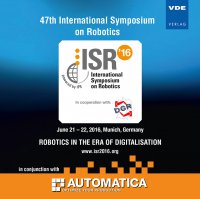From Virtual Testbeds to Real Lightweight Robots: Development and deployment of control algorithms for soft robots, with particular reference to industrial peg-in-hole insertion tasks
Konferenz: ISR 2016 - 47st International Symposium on Robotics
21.06.2016 - 22.06.2016 in München, Germany
Tagungsband: ISR 2016
Seiten: 7Sprache: EnglischTyp: PDF
Persönliche VDE-Mitglieder erhalten auf diesen Artikel 10% Rabatt
Autoren:
Grinshpun, Georgij; Cichon, Torben; Dipika, Dipika; Rossmann, Juergen (Institute for Man-Machine Interaction (MMI), RWTH Aachen University, Germany)
Inhalt:
Mating of components is a major production step in automated assembly lines. Many aspects in mating two parts can be reduced to a peg-in-hole problem. When the parts are fitted to each other, jamming may occur, leading to assembly failure or damage to the parts, to the robot, or to its enviroment. Therefore, an intrinsically safe environment is required for the developement and testing of new algorithms. In this paper we present a workflow for developing control algorithms by means of a Virtual Testbed: First, we create a virtual setup to test and optimize the algorithm in simulation. This setup comprises a digital twin of the used physical manipulator and an application-oriented virtual environment for its operation. Then an algorithm for peg-in-hole insertion is developed that copes successfully with peg and hole fitted to each other with small clearances. This algorithm is tested and validated using the digital twin within the simulation. After its successfully validation in a virtual testbed, the algorithm is transfered to a physical setup containing the physical KUKA LWR4 manipulator and manufactured assembly parts.


